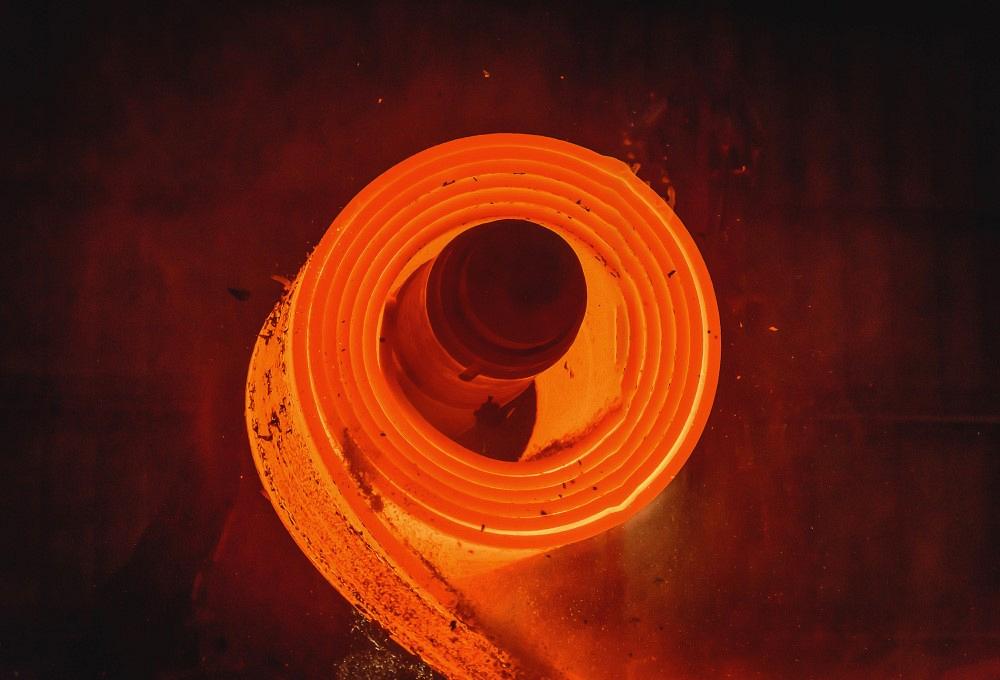President/CEO
- FMA
- The Fabricator
- FABTECH
- Canadian Metalworking
Categories
- Additive Manufacturing
- Aluminum Welding
- Arc Welding
- Assembly and Joining
- Automation and Robotics
- Bending and Forming
- Consumables
- Cutting and Weld Prep
- Electric Vehicles
- En Español
- Finishing
- Hydroforming
- Laser Cutting
- Laser Welding
- Machining
- Manufacturing Software
- Materials Handling
- Metals/Materials
- Oxyfuel Cutting
- Plasma Cutting
- Power Tools
- Punching and Other Holemaking
- Roll Forming
- Safety
- Sawing
- Shearing
- Shop Management
- Testing and Measuring
- Tube and Pipe Fabrication
- Tube and Pipe Production
- Waterjet Cutting
Industry Directory
Webcasts
Podcasts
FAB 40
Advertise
Subscribe
Account Login
Search
Steel prices come back down to earth
Now it’s just a matter of how much meterial prices will decrease
- By John Packard and Tim Triplett
- January 18, 2022

Companies that purchased extra steel to safeguard against supply delays and shortages in 2021 could find themselves in trouble if prices continue to fall in the new year. Getty Images
The big question for most of 2021 was “How high can steel prices rise?” The big question for 2022 is “How low can they fall?”
Steel Market Update (SMU) checked the market the week of Jan. 10 and it showed the benchmark price for hot-rolled steel dipping below $1,500/ton ($75/cwt) for the first time since April 2021. It should be noted that last April the hot-rolled price was on an upward trajectory that eventually would take it to a record high of $1,955/ton in early September.
Since then, the price has been plunging rapidly back to earth. Where and when it will land is anyone’s guess. As of the second week in January, the hot-rolled price had declined $475/ton, or nearly 25%, from its peak to $1,480/ton. By all indications, that downtrend is likely to continue for months as supply and demand seek equilibrium.
As Wolfe Research Managing Director Timna Tanners told SMU in a Community Chat webinar, “The trajectory of prices in 2022 will depend on the pace of destocking, the new capacity ramping up, and demand.” SMU survey data offers some insights into those three factors.
Demand in most sectors is favorable entering the new year, based on anecdotal evidence from readers (see Figure 1). About 72% of the service center and OEM executives responding to SMU’s weekly survey reported that demand for their products is stable. The rest were almost evenly split on demand improving or declining.
Demand, of course, is a moving target and subject to steel prices and the whims of the economy. Service centers reported that 38% of their contract customers are releasing less steel than they did at this time last year. Around 80% of the manufacturers responding expect demand for their products to be stable or to decline marginally in the next few months—in other words, good but not great in terms of growth. So while demand appears positive, it is anything but certain in the months ahead.
One big wild card for demand is the situation with steel inventories. SMU data shows the industry has gotten significantly over-inventoried from a combination of double ordering when the market was tight last year, import buys now arriving, and customers’ delaying purchases as they wait to see how low prices will go. About 38% of service centers said they have too much material on hand and are looking to reduce stock levels—which is significant considering that service centers account for about one-third of steel demand. Likewise, 20% of the manufacturers polled said they are planning to reduce their inventories.
While 69% of the service centers and manufacturers surveyed last month still considered themselves active buyers, the other 31% told SMU they were in a wait-and-see mode. After all, no one wants to buy steel today if it will be cheaper tomorrow. It’s rarely a good idea to try to catch a falling knife.
How much cheaper might it be tomorrow? Steel prices declined at a pace of $20/ton to $25/ton per week in the last quarter of 2021 and into the new year. SMU’s poll in early January asked steel buyers: Where do you think hot-rolled coil prices be at the end of the first quarter?
The vast majority, 78%, said they expected HR prices to dip below the current $1,500/ton (see Figure 2). About 31% said they think prices will be in the $1,400s by the end of March, 17% in the $1,300s, and 30% in the $1,200s or even lower. Calculated as a weighted average of all the responses, those predictions would put the HR price around $1,378/ton by the end of March. That’s down another $100/ton—which may be optimistic given the rate of decline to date.
Analysts, such as Wolfe Research, point to a dozen mill expansions that will add some 18.6 million tons of new steelmaking capacity to North America by 2025—12 million tons of it this year—with little chance of a comparable increase in consumption. Such overcapacity for production of flat-rolled steel promises a “sheet storm” in the years ahead that bodes ill for steel prices, contends Tanners. Wolfe Research predicts hot-rolled steel could end the year with a price as low as $750/ton. That’s not good news for anyone with inventory, but not all bad for fabricators and manufacturers, who will almost certainly see their cost of materials decline this year.
Upcoming Events
SMU’s next educational offering is its Introduction to Steel Hedging workshop, on Feb. 14-15, in Tampa, Fla. Participants will learn the basics of hedging futures and managing price risk, skills essential in today’s volatile market. That workshop will be held in conjunction with our Tampa Steel Conference on Feb. 14-16. Both events are live.
Also, it’s not too early to put the next SMU Steel Summit on your calendar. The SMU Steel Summit, the biggest annual steel gathering in North America, is set for Aug. 22-24 in Atlanta.
For more information on these events or to sign up for a free trial subscription to Steel Market Update, email info@steelmarketupdate.
subscribe now

The Fabricator is North America's leading magazine for the metal forming and fabricating industry. The magazine delivers the news, technical articles, and case histories that enable fabricators to do their jobs more efficiently. The Fabricator has served the industry since 1970.
start your free subscriptionAbout the Authors

John Packard
800-432-3475
John Packard is the founder and publisher of Steel Market Update, a steel industry newsletter and website dedicated to the flat-rolled steel industry in North America. He spent the first 31 years of his career selling flat-rolled steel products to the manufacturing and distribution communities.

Tim Triplett
Executive Editor
- Stay connected from anywhere

Easily access valuable industry resources now with full access to the digital edition of The Fabricator.

Easily access valuable industry resources now with full access to the digital edition of The Welder.

Easily access valuable industry resources now with full access to the digital edition of The Tube and Pipe Journal.
- Podcasting
- Podcast:
- The Fabricator Podcast
- Published:
- 04/30/2024
- Running Time:
- 53:00
Seth Feldman of Iowa-based Wertzbaugher Services joins The Fabricator Podcast to offer his take as a Gen Zer...
- Industry Events
Pipe and Tube Conference
- May 21 - 22, 2024
- Omaha, NE
World-Class Roll Forming Workshop
- June 5 - 6, 2024
- Louisville, KY
Advanced Laser Application Workshop
- June 25 - 27, 2024
- Novi, MI
Precision Press Brake Certificate Course
- July 31 - August 1, 2024
- Elgin,































